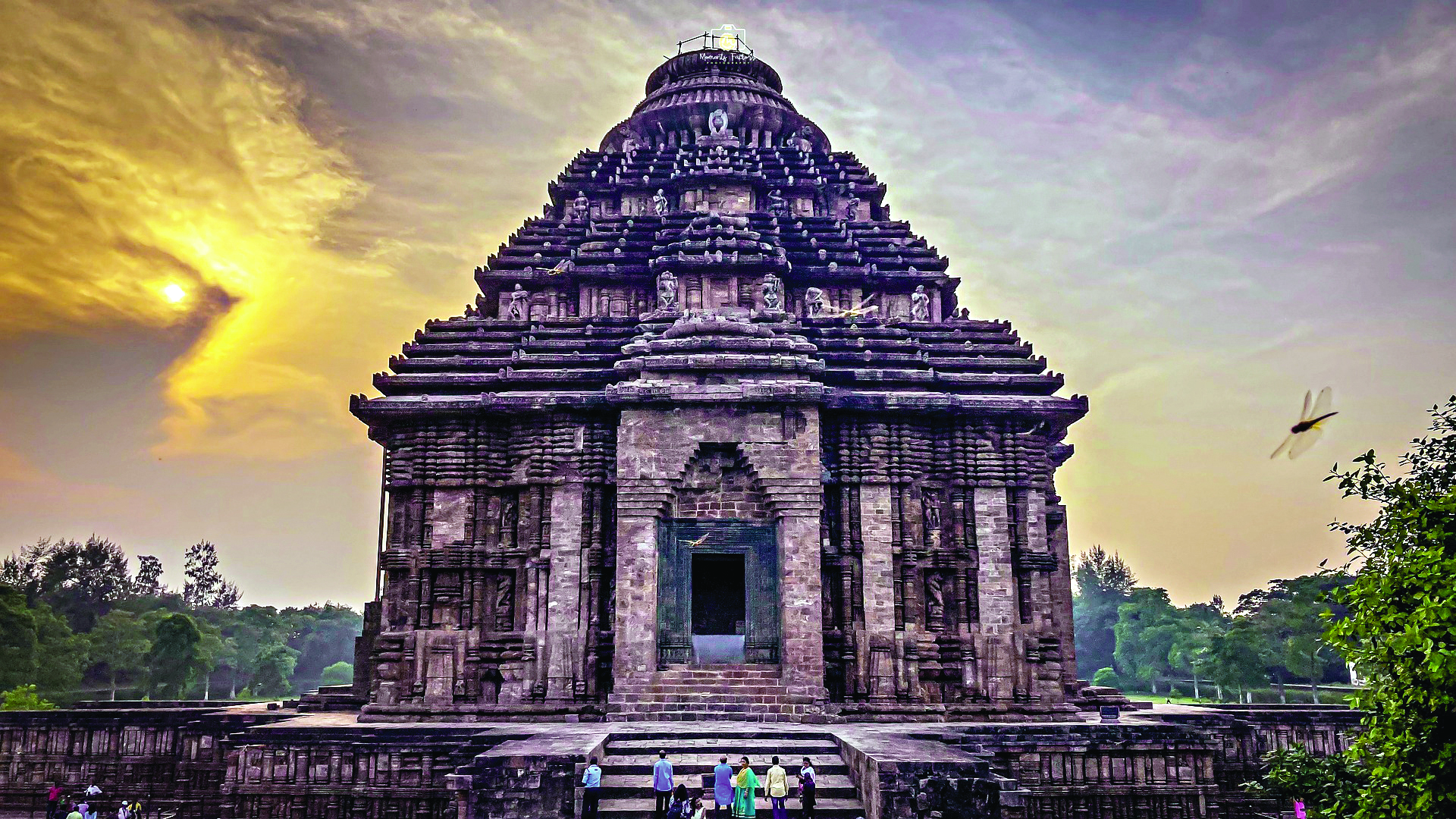Exquisite carvings of Konark
Originated under the ancient Eastern Ganga dynasty, the stone-craft of Konark not just continues to be an expression of love, devotion and faith but has also been improvised by manual artists to meet the decorative and utilitarian requirements of the present age

The Eastern Ganga dynasty (also known as Purba Gangas, Rudhi Gangas or Prachya Gangas) were a unique medieval-era Hindu dynasty that reigned over Kalinga from as early as the 5th century to the mid-20th century. In fact, this is one of the few regions in the country which was able to retain its independence from the Mughals. However, in the 18th century, they were compelled to accept the suzerainty of the British empire which accorded them the status of a gun-salute princely state.
The Kalinga kingdom extended over much of the modern region of Odisha as well as northern Andhra Pradesh, parts of Chhattisgarh and the Midnapore district of West Bengal. It was during this period that the Odia language got official status, following its evolution from Odra Prakrit.
The Gangas were great patrons of religion and art, and the temples of this period — the renowned Jagannath Temple at Puri, the Konark Sun Temple and Ananta Vasudeva Temple at Bhubaneswar — rank among the masterpieces of Hindu architecture.
Over the centuries, the artists of Konark have retained and improvised their unique skills of stonework in Odisha. The present-day stone-carving products range from the divine to the astronomical and the secular, besides, of course, the local flora and fauna. As per the memorandum filed with the GI registry in 2008, an inscription of 1604 CE mentions that these artists mainly belong to the Pathuria caste and bear surnames like Das, Mistri, Nayak and Maharana. It has been submitted that only those living within the specific latitudes and longitudes (Konark 86°E 19°N and Bhubaneswar 85°E 20°N) are the exclusive inheritors of this tradition, and thereby the only ones authorised to use the GI tag for their wares.
Serpentinus or Sang-i-Yashm
The most important feature of this Konark stone craft is the very special and unique raw material which is indigenous to the region. The Konark stone is classified as an ore of Serpentinite, called so because of its colour and markings resembling the skin of snakes. Serpentine minerals are polymorphous, meaning that they have the same chemical formulae but the atoms are arranged in different structures, or crystal lattices. Serpentine stone is found in a staggering variety of colours — multi-coloured, green, pink, grey, and black, and has a distinctive dull to greasy lustre and a greasy feel. The name comes from the greenish colour and smooth or scaly appearance from the Latin ‘serpentinus’, meaning ‘serpent rock’. Its use was known in Persia and Arabia, where the highest grade was called ‘Sang-i-Yashm’ in Persian.
Compared to other dark rocks, serpentine is soft. Locally, it is called ‘Khadi Pathara’, or soft stone. Though this is the most preferred stone, red sandstone, Makrana marble, Khondalite (called ‘Sahana Pathara’), black granite (called ‘Muguni Pathara’), and ‘Kochila Pathara’ (Greenschist or greenstone deriving its name from the abundance of green chlorite) are also used.
As contemporary chronicler Lakshmi Subramanian says: “The uniqueness of these stone carvings comes from the serpentine stone used which is found in an array of colours like shades of green, pink, grey and black”. She goes on to add that the dull lustre and feel of this stone that resembles the colour and markings of the snakeskin lends the postures of the Odissi dancers, ‘swarasundaris’ (damsels playing musical instruments), Konark wheel, horses, elephants, lions as well as idols of Lord Ganesha, Lord Krishna and Radha Devi, Lord Buddha, Durga Devi an air of elegance and charm. The sculptures, with their exquisite detailing and craftsmanship, were an expression of love, devotion and faith, and went beyond religion into the realm of spirituality and consciousness.
As the years have gone by, this craft is now more of an art, and the reproductions of the stonework seen in the temples of Odisha are both decorative as well as utilitarian. The artists of today continue to work with the traditional tools of chisel and hammer, and faithfully follow the age-old doctrines laid down in the texts written by the legendary Vishwakarma to recreate these masterpieces.
The first step in the process is the tracing of a silhouette on the stone. Hammers and chisels of various sizes and types are then used to make a deeper impression on the stone. All the surfaces are meticulously finished and sandpapered. Every block of stone or marble demands a slightly different approach to the next piece because of its own unique nature. It may be important to note that computer-controlled cutters have still not been able to improve upon works finished by hand.
These days, the artisans have started creating modern pieces that are hugely popular among tourists as well as locals. These include home décor items like candle stands, bookends, vases, pen stands, paperweights, lamp bases, stoneware utensils like cups, vessels, glasses and items for puja. They have adapted well to the changing times, but when you visit these exquisite temples, spare a thought for those who made it possible. They need your appreciation, and patronage as well!
The writer superannuated as the Director of the LBSNAA after 36 years in the IAS. He is currently a historian and policy analyst.



